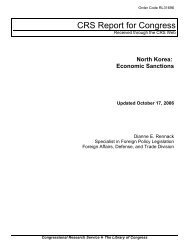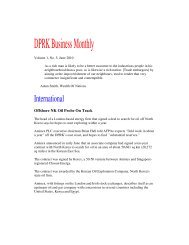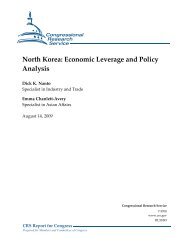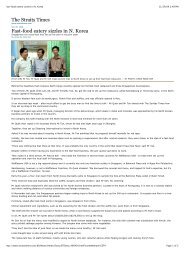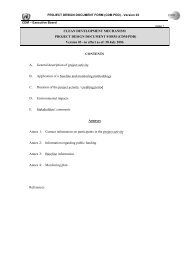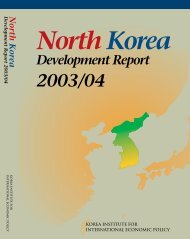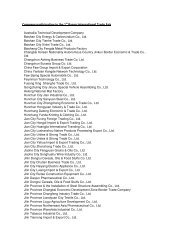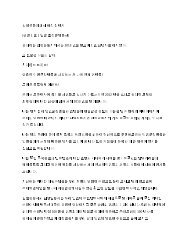North Korean Policy Elites - Defense Technical Information Center
North Korean Policy Elites - Defense Technical Information Center
North Korean Policy Elites - Defense Technical Information Center
Create successful ePaper yourself
Turn your PDF publications into a flip-book with our unique Google optimized e-Paper software.
Originally implemented in 1994 and formalized in 1998 to ostensibly manage a deteriorating<br />
economy and a growing confrontation with the United States over <strong>North</strong> Korea’s nuclear<br />
program, this system provides a framework for Kim Chong-il to build and isolate his power. It<br />
remains in effect probably to prevent a coup and to cope with the country’s serious internal<br />
problems, thus guarding against internal instability. Operating under a crisis management mode<br />
allows Kim Chong-il, as either the Supreme Commander or chairman of a staunch group of<br />
loyalists who staff the NDC, to easily and legitimately direct the military forces, affect military<br />
personnel changes, mobilize the country to a war footing, and command sectors of the economy.<br />
The informal nature of this system is apparent. Institutions and bureaucracies exist;<br />
elaborate legal procedures and regulations provide the outlines of formal rule. But the formal<br />
legal framework is often violated by a body of secret and unpublished circulars, regulations,<br />
decrees, orders, resolutions, and so on, which supercede published norms. Although various<br />
party and state institutions are invested with certain well-defined formal functions and powers,<br />
identifiable lines of legal responsibility, and specified procedures, the actual process is different.<br />
The <strong>North</strong> <strong>Korean</strong> political superstructure is a complicated mosaic of shifting and<br />
interlocking, but relatively simple institutions, resting upon the entrenched foundation of oneman<br />
dictatorship, in which all powers are delegated from Kim Chong-il. The institutions of both<br />
the party and state, in terms of both their relationships with one another and the relationships of<br />
various organs within the party and state structures to each other, are essentially creations of Kim<br />
Chong-il (and his father) and are designed not to limit the Suryong’s power, but to limit that of<br />
his subordinates and potential rivals and to facilitate the consolidation of his own authority.<br />
Conflicting lines of authority between party and state provide an ad hoc system of crosschecks<br />
and balances.<br />
Kim Chong-il, by most accounts, does not subscribe to a deliberative policy-making<br />
process. Inputs from other senior leaders is circumscribed and tailored to fit what they think he<br />
wants to hear. This prevents the regime from devising long-term policies and reacting quickly to<br />
outside stimuli. In addition, the decision-making process is highly personalized. As such,<br />
challenges to the regime, either internal or external, are easily wrapped up in power politics.<br />
The Role of Family and Key Relationships<br />
Power and leadership in the <strong>North</strong> <strong>Korean</strong> political system has its own unique<br />
characteristics. It derives from a staunchly traditional Confucian culture, in which the family is<br />
the central socializing element and the father functions as an authoritarian figure in the family.<br />
This culture is reflected in the political system through a curious blend of nepotism, a dominant<br />
II-7



